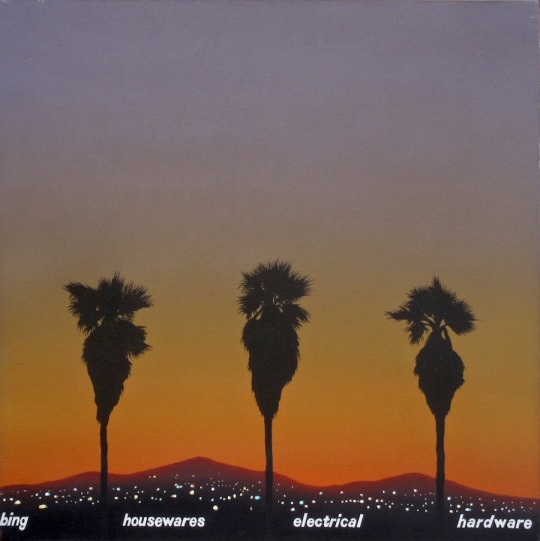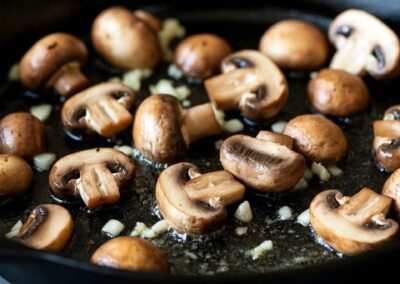#Italian:
Explore tagged Tumblr posts
Text
Reverse Immigrant: Not Italian Enough For Italians, Not American Enough For Americans
Explores the challenges of reverse immigration and cultural belonging, detailing my experience as someone caught between two worlds at midlife. Reverse immigration is an increasingly common phenomenon, but the emotional and cultural complexities faced by individuals in this position often go unspoken. It blends personal storytelling with universal themes of cultural integration, alienation, and self-discovery in the context of Italian social structures, making it relatable for a wide audience.
My heart pattered softly as butterfly wings as I stepped off the train in Milan Centrale. I visited Italy many times, but now, I came to plant myself as an Italian American dual citizen. Not as a seedling, those years were gone and I was fully formed, but rather as a reverse immigrant to propagate myself like a stem cutting in the soil of my ancestors who were driven out of Italy at the turn of the century by grim hunger and desparation, for a better life in America, toward something sharp and brilliant, like the glitter of a sword. I can only imagine what they would say about this decision exactly a hundred years after they risked their lives, suffered stinging prejudices, and did the backbreaking labor that built America, only watch me undo it in a single six-hour plane flight, but I had good reasons. The United States was no longer the country I grew up in and I don’t think they would recognize it either. American felt stifling to me, like an old basement crammed with relics from my past I no longer found useful. In Italy, I was rebuilding myself, personally and professionally, which did not translate into the life of my country. Perhaps they will forgive me because I returned to the motherland for the same reasons they went America, for the promise of a better life.
On an ordinary Tuesday in Paris, I received the second email in two years to teach English Language and Literature at an international school in Beddizole, a small town in the Lombardy region of Italy, just outside Brescia. Since leaving the United States with only the clothes on my back, I had lived in Paris for four years, but found it increasingly exasperating. Paris was beautiful, but the honeymoon seemed to end where French cynicism began. It has been said that the French live paradise, but they think they are living in hell, and it started to feel that way for me. Like a job. My language skills were steadily improving, and my quality of life was quite good compared to the United States, but I could not locate the promise of a joie de vivre, living joyously. Paris is a private club, and I was not invited. I was suffering from a mutated strain of Paris Syndrome, the disappointment I felt that my experience was not what I expected.
Since my “gray divorce” my motto has been to say “yes” to everything and so, I said yes, to this repeated job offer, even though I had already accepted a university position at a private French university. Once more, I packed my bags (I felt like I had one more move left in me) and hopped on a train to Milan, and then another to Brescia. The teaching job turned out to be a disaster that ended abruptly on Christmas Eve when I was summarily fired without just cause, but I’ve faced bigger dragons than this before in New York. During those cold and dark January weeks, I picked myself up despite the horror of my predicament and found better teaching work and I am thriving. Italy may not be perfect, but the Italians make me feel welcome, unlike the French, and that has made all the difference.
I am an Italian dual citizen and strangely enough, Italian-Americans invariably identify as Italian but we aren’t, at least not in the way that Italians understand it. To them, I am American with Italian roots, and there’s a difference. It should have triggered an identity crisis, but it didn’t. Still, I don’t feel American enough for Americans and not Italian enough for Italians. On the other hand, I’ve heard some Italians say I’m more Italian than they are because I have retained and understand the Italian traditions of a hundred years ago that they have not. It seems the question of cultural identity cuts both ways. More than anything else I regret, yet had nothing to do with, is that I cannot speak Italian fluently (yet). Hunger drove my ancestors in a hurry like gathering clouds to America and with it came a clear sky of gratitude which they expressed by insisting my parents speak English. This gratitude, quickened by pride, resulted in a great language loss by me and a daily source of embarrassment. I was raised by Italians and I know many Italian ways, attitudes, behaviors and even a handful of Neapolitan words, but I do not speak the language very well (yet) and so, to Italians, I’m not really Italian. The ancient Greek word βάρβαρος (bárbaros) meant “babbler.” To the Greek ear, someone who did not speak the Greek language babbled, producing the onomatopoeic sound “bar bar bar” which became bárbaros, and later barbaria in Latin. They thought, if you do not speak my language, you are not one of us and you are a barbarian. This gaping deficiency places me squarely in that cultural netherworld where I am neither Italian enough for the Italians nor American enough for the Americans. At the moment, I try to cover my shame with humor and say that I speak advanced babytalk, but I am diligently taking Italian lessons to rid myself of that indignity. I try to be gentle with myself and remember that neuroplasticity decreases with age and I am learning as fast as I can. Italians think I am missing out on a lot, and maybe they’re right, but I’ve had enough deep conversations in my life to know there isn’t much that’s new in the way of everyday discussion. Secretly, I don’t mind these moments of my zen silence where I can observe the locals in their natural habitat. It’s my guilty pleasure of maturity and the torrent of transcript chatter, like prices are too high, can’t believe she did that, this weather is awful, I’m so tired, I hate my job, my boss is a ass, and so on, is often predictable. That’s not to say that my daily struggles as an expat immigrant can be compared to someone who is a political, climate, or war refugee immigrant. I cannot know what level of trauma or culture shock they have experienced, what unexpressed grief and loss they have endured, but I do feel the occasional waves of guilt for leaving my kids (who are now adults and have their own life and actually applaud my lifestyle). Today, I regret nothing and I am content with my choices.
At the same time, choices often come with a price and the promise of a better life has cost me my old one. Losses add up incalculably, like attempting to number the waves on the shore of a limitless sea. In the six years I’ve lived abroad, in Paris and now Brescia, I have crossed one ocean and six time zones. I have lived in two different countries and six different apartments. Missed three weddings, four funerals, and two christenings I could not attend, and dozens of birthdays. Lived through a global pandemic. Received four COVID vaccines. Been scammed twice. One, which required me to file a law suit. Filled out one serious police report and one minor. I’ve been in the hospital twice. Locked myself out once. I’ve cried in the shower hundreds of times. Missed four Christmases and Thanksgivings, and five Mother’s Days. I also missed attending my daughter’s college graduation in person but that was because of the pandemic. Heard about three divorces. Acquired two national health care cards and lost my American driver’s license because it expired. Been told it was not possible when it was, too many times to count. Experienced countless days feeling lost and lonely. Felt confused and anxious, not always, but often enough. I have been treated many, many times like I am less intelligent than I am because I’m American until I was able to prove differently. I’ve made lots of new friends, good, fiercely loyal friends, and then they moved away or I did. Every day I can’t express myself the way I want to and I feel like I am much smarter in English, so much funnier but those around me will have no idea. For one year, I thought I knew how to ask where the toilet was in Italian, only to discover I had been saying it incorrectly all along. Every day I have had to relearn how life works. I’ve had some of the most intense relationships, sexual experiences, and emotional feelings of my life. I have had four teaching jobs and been fired from one without just cause which is really scary as a woman, alone and broke in a foreign country. I have had a complete change of career from Intercultural Trainer and Expat Career Coach to English Language and Literature professor. I’ve gone to uncountable resturants, bars, café, concerts, clubs, and dance events along the Seine. Drank hundreds of bottles of wine. Traveled as far as Norway and as far south as the Greek Islands. I’ve done dozens of things I thought I would never do but, to take a line from Fight Club, “It is only when you lose everything that we are free to do anything.” I cannot tell you when is the right time to take action to change your life, or leave the country, but as Dorris Lessing said, “ Whatever you’re meant to do, do it now, the conditions are always impossible.”
I am American by birth, Italian by blood and residency, but at sixty-two and divorced with two grown children, I am comfortable enough in my own skin to accept these, and many other scratchy certainties. Eventually, I will become more proficient and perhaps the Italians will feel more comfortable with me because at the moment, they don’t know what to do with me. There is no model for a modern, middle-aged woman who knows she has another another life in her, especially in a country like Italy where ageism and sexism are prevalent, where women often have a less power and agency despite the veneer of education, occupation, or income.
Old ways are fossilized in stoney tradition. A Sicilian friend of mine whose family immigrated with their four kids from Sicily to the States when he was about ten, told me, nothing ever changes in Italy, especially not Italian ways. I didn’t quite fully grasp what he meant at the time, perhaps because I was young and couldn’t comprehend the idea that nothing could change because I was raised in the newest, new world, Southern California, a place synonymous with change. To him, Italy was the “old country” while I perceived it as a dazzling completeness of beauty, but the example he gave was simple: that Italian farmer has been drawing water from a well for the last hundred years, and that’s the way he will continue to get his water for the next hundred. Maybe it was a bit of an exaggeration, but he wasn’t wrong. For example, when I told him I received my Italian citizenship ID card, he cracked, ha! And it’s still issued on flimsy paper I bet, and then I began to understand what he was trying to tell me about the well. The Italian ID card has been in paper form for the last eighty seven years and was one of the last to go modern in the EU. The project of an electronic identity card began in 1997 and is finally a plastic card with an electronic chip. Getting things done here can feel as slow as waves rolling in, long and lazy, like sea-worn travelers.
Perhaps what I represent to Italians, and my students in particular, is uniquely made of Italian American DNA; a photo negative of their unmet dreams spirited by Italian Americans like Fiorello La Guardia, Mario Cuomo, and Giannini who rebuilt San Francisco and created the Bank of America; Geraldine Ferraro, Madonna, and Nancy Pelosi, sons and daughters of immigrants who built their dreams in the United States for the sake of others. There are second acts in America and this is an example of how mine is playing out in Italy. Maybe it’s my third.
Hemingway said there are all kinds of hunger. Memory is a hunger. Perhaps I was headstrong and foolish to return to my ancestral home, but I was driven for as long as I can remember to Italy because I had an insatiable appetite to satisfy the strong memory of family experiences that accompanied me all my life like an unwavering, loyal friend; driven by a malnourished soul few Americans can comprehend. On the other hand, I inherited the nourishing quality of Neapolitan resourcefulness: Arrangiarsi meaning to “make do” and figure it out yourself, and this character trait, whether born of personality or genetics or both, has served me well as an expatriate immigrant. Americans would call it as self-reliance, but whenever I am suffering from the mental, emotional, or physical exhaustion that comes from the stress and frustration of a life in significant transition, I lean on these attributes and the samsonite strength of my ancestors, rather than scattering it in agitation, from people who courageously crossed an ocean when it was unlikely they strayed far from their own villages, like Margliano or Sciscianno. Relatives who suffered from the tyranny of poverty and hunger; a desperate force that hurled them on to ships, leaving everyone and everything they once knew, behind. Once, when I was much younger, I asked my maternal grandfather, Saverio Mascia, why he left Italy and he tilted his head down a little mournfully at the imaginary dirt of his youth, swiping his shoe back and forth like a weary windshield wiper and told me, because there was nothing to eat. In the silence between us, I sensed there was trauma in that reply and I’ve probably recieved some part of that unwelcome inheritance. He moved back and forth frequently between Chicago and California duirng my childhood, like an indecisive waiter, unable to commit to either place for very long. Perhaps he was searching for a “geographic solution” in the expectation that moving would cure the profound melancholy that haunted him.
I come from a long line of Italian farmers. Saverio or “Sam” was a farmer and his father was a farmer, and so on, as far back as I could document in the geneological descriptions. As a landless, post-unification Mezzogiorno peasant, life offered up a chronic plate of hardship, exploitation, and violence, particularly around the “triangle of death” outside Naples of Acerra, Nola, and Marigliano, the latter where my grandmother, Pasqualina was born. The soil was barren, yielding little; malnutrition and disease were prevalent during the Great Wave of Immigration between 1880 – 1924 when nearly a million Italians came to the United States, half of them between 1900 – 1010 when my ancestors came[1] which now makes up the nation’s fifth largest ethnic group in America. The reasons people immigrate are ususally this dire, or worse, but in my case although I was not starving, it felt that way, emotionally. Most migrants and refugees leave because they are desperate or live in fear, or both; forcably displaced because of persecution, conflict, violence, and unspeakable human rights violations. People who are desperate do desperate things because death is like a predator, chasing them from behind, and instead of fighting, they flee from it, too terrified to fight back. I left because I was tired of the quarreling at home, with the fallen ideals of my country, and a dozen other reasons strewn on the floor but my exodus was a choice and I believed I could, as a divorced, middle-aged woman on a fixed income, make a lateral move that would stabilize, if not improve, the standard of living I was accustomed to, but I could not explain this concept adequately enough to my American friends and family. I suffered from exulansis, the tendency to give up trying to talk about an experience because people are unable to relate to it—whether through envy or pity or simple foreignness. And, I refused to be buried in New Jersey.
Sam arrived, first at Ellis Island. I know that because I saw his name commemorated on the immigrant wall. He continued on to Chicago, presumably because he had friends and distant relatives there, not unlike me when I first moved to Paris before coming to Italy, but we American expats don’t congeal into the jellied “little” enclaves like other relationship-oriented people. We are more individualistic and less likely to form tribes into a coherent diaspora abroad because that’s how we’re wired. He was unskilled, illiterate, and did not speak English. I am educated, skilled, and don’t speak much Italian (yet), but my advantages don’t make the foreign feel more any more familiar, they are only less worse, and cultural adaptation takes time. The difference is, he could become American and I am unsure if I will, or want, to become Italian. Perhaps I will be Italian-ish. He dug ditches and laid labyrinthian pipes at the feet of Chicago’s big shoulders. I reinvented my career as an English Language and Literature teacher, however we both felt the need to escape; for him, from a semi-feudal society that increasingy held little in the way of opportunity; for me, from a country that has veered off the rails into casino capitalism and gone mad politically. (Under Italian law, I have the right to asylum from an undemocratic country!) According to Freedom House, the America has experienced a 16-year decline in global freedom. The US score in Freedom in the World fell by 11 points on a 100-point scale in the decade from 2010 to 2020, with an accelerated deterioration of 6 points during the presidency of Donald Trump. In Freedom in the World 2022, which covers the events of 2021, gains in the US score were counterbalanced by declines and the total remained at 83. That put the country on par with Panama, Romania, and South Korea, and about 10 points below historical peers like Germany and the United Kingdom.[2] His thickly calloused hands built Chicago’s infrastructure and I unveil a new world perspective to my gregarious Italian students who are unintentionally ensnared in the old world. At the end of the immgration wave, he was one of five million Italians who came to America and I am one of five million American expatriates who live scattered around the world, one of the sixteen-thousand living in Italy.
Back and forth, Italians and their descendents have left Italy, settled elsewhere, and some, like me, have returned to the motherland, by a zionian pull so strong that some of us must go back, but it is not a paradise, and it is my impression that one day, this gorgeous and beloved country may become one of the least ethnicnally identifiable, culturally in the world[3]. It is rowing upstream against a strong downward current towards an epic demographic crisis; a perfect storm of an aging population, declining birth rates, and a brain drain. The aging population is called the “Silver Tsunami” with over half the population over 45 and one of the world’s longest lifespans. The low “fertility trap” or negative birth rate is twelve deaths for every 7 births. The fuga di cervelli or “brain drain” is the working age population leaving to be employed in other countries, however 30-50 percent of them returned (called the ritornati) so the trend is positive. The millenial exodus could be caused by many factors, but perhaps the most obvious is the lack of opportunity, employment, and chronic bureaucracy; a slow justice system and cumbersome tax regulations. However, like many other countries thanks to the pandemic, Italy has attempted to “trampoline” to become more modern and competitive. As a teacher, I hope I am part of this effort by exposing students to as many new ideas and perspectives as possible; to prevent them from becoming part of the fossilized Italy trifecta. That, and phrasal verbs.
Italy is breathtaking, but this mozzafiato is a double-edged sword, preserved, or petrified, across landscapes, architecture, monuments, and basilicas, yet at the same time, it reflects the paralysis to change social systems, especially around income inequality and deep-seated sexism[4]. For Italians who are reluctant to change, it took, and will probably only take again sadly, another authoritarian figure like Mussolini (who built roads, bridges, and buildings) to retool the nation's economy. One look at the architecture of those fascist style buildings he built during his dictatorship, large and symmetric with sharp non-rounded edges, will tell you that this was revolutiony. One day, as I stood in the middle of the grand Piazza Dell’Loggia in Brescia where I live, an Italian from Udine told me, look at the difference between this post office he built and the old palazzo architecture beside it. To Italians at that time, this was New York City. It represented both innovation and a reverential nod to their Roman roots, and it was way ahead of its time compared to the medieval architecture that had stood like vigilant centurions for centuries. He was the future. They succumed to his authority not because they liked his politics so much as they needed someone like him to get things done. I never thought of it that way. Perspective is always about who’s telling the story.
To underscore this notion that change happens slowly in Italy, it was only recently in 1861 that it became a country. It is second only to the United States (1776) as one of the newest old countries to be formed which could not, and would not have thought to, unify itself. It is a combination of nearly 20 nations states that shared neither language (for the most part) customs, nor tradition. Italians were accustomed to living next to, but not in harmony or unity with, other Italians. They could, however, rely on two things: family and di arrangiarsi, and barring that, particularly in the South, below Naples including Sicily, the mafia stepped in to fill the void of law and order to provide “protection” where the state did not. The forgotton South took matters, for better or for worse, into their own hands when it came to law and order or economic prosperity until recently. Change happens at a gacial pace, a testiment to the often obdurate and defiant Italian mentality. It’s fitting to note that I live in the heart and soul of old Brescia, next to a Roman temple dating back to the first century AD during the Roman Empire. What’s important is that there are pre-Romanesque ruins below that site from the Bronze and Iron Age. Italian ways seem as old as their layered history. That’s not to say they’re not spontaneous which is a contradiction to what I’ve observed, and they are, but I think their spontenaity is born as a reaction to this rigidity, rather than an anomaly and they can be surprisingly flexible when it comes to la dolce vita or living life in the moment, enjoying the sweetness of doing nothing, which I’ve become spectacularly good at. If Italians, or other cultures, contain contraditions, then they contain the multitudes of humanity, of both the ideal cultural values and the possible negative perceptions.
What will happen to Italian culture and identity as a result of their history and current transition into the 21st century is anyone’s guess during this demographic winter. Who is Italian, what makes an Italian, or Italian American? What will Italy or Italians look like in the future given the current immigration dilemmas and short-termed solutions, like the 1 Euro housing scheme desgined to attract people, foreigners mostly, to revive abandoned hilltop villages, who can tell, but I suspect they will not be solved by selling off real estate which implies a doubt in the country’s ability to get at the root of the problem, systemically. When there is a vacuum of decision-making power, what takes the place may not be in the country’s best interest and it can be vulnerable to a cultural, socio-political malware that has nothing to do with the ideals, identity, or interests of Italians. Like the dinosaurs, Italy may look like it’s about to become extinct but perhaps the glimmer of hope may lay in their fossilization, in the amber of the ritornati; the returning millenials and Italian Americans who embody the ideals and work ethic they were able to demonstrate and execute successfully elsewhere, without the deterrant nuissance of tradition.
The contradiction that struck me most with remarkable surprise, was what I saw so clearly in myself for the first time; how Italian I was and was not. The Southen Italian I am is a dutiful mix of compliance to food, music, and the dialect of my immigrant ancestors from a hundred years ago. A time capsule preserved by sheer force of my memory’s carabiners to things which no longer exist particularly in the modern, dynamic, energetic North. A southern persona that is grossly mythologized by superstition (like the corna, cornetto, and malocchio) and of course crime, an idea that author and former Minister of Finance of Greece, Yanis Varoufakis has corrected because while the South is corrupt, it is low-level corruption, cheap corruption, whereas the north practices industrial scale, systematic, beautifully designed, high-tech corruption[5]. It was a staggering surprise for me during the entry phase that began with shock and ended with forelornness. I was not who I thought I was, ethnically. On the other hand, there is also a smugness I feel because I know, just as the arhictecture and Italian ways are set in stone, so is my Italian-ness. To return to my roots and to embrace its traditions. Italians may feel a sharp pang of regretful wonder at my particular species of Italian American, but I’d like to think I might be that minuscule grain of sand to an unsuspecting oyster, one that could contribute a slight pearl of knowledge and experience to my Italian students who might think differently about their world because I exposed them to the new one. Perhaps to prevent it from becoming “Like white sepulchers, beautiful on the outside but filled with dead men’s bones on the inside.”
Notes:
1. https://www.pbs.org/destinationamerica/usim_wn_noflash_5.html#:~:text=Italian%20emigration%20was%20fueled%20by,malnutrition%20and%20disease%20were%20widespread.
2. https://italicsmag.com/2020/12/01/why-millennials-are-moving-back-to-italy/
3. https://apnews.com/article/europe-business-health-coronavirus-pandemic-italy-fde87cd63c7c388f2684cd0450b882f4
[1]https://www.pbs.org/destinationamerica/usim_wn_noflash_5.html#:~:text=Italian%20emigration%20was%20fueled%20by,malnutrition%20and%20disease%20were%20widespread
[2] https://freedomhouse.org/report/freedom-world/2022/global-expansion-authoritarian-rule/reversing-decline-democracy-united-states
[3] https://www.theguardian.com/world/2023/oct/07/italy-births-far-right-demographic-winter?CMP=Share_iOSApp_Other
[4] https://www.theguardian.com/global-development/2023/jul/16/any-victim-is-a-liar-sexual-violence-scandals-in-italy-expose-deep-seated-sexism
[5] https://fb.watch/nhbdwB9tQq/
#immigration#Italian#American expats#Culture clash#culture#identity#USA#citizenship#motherland#mid-life#crisis#Trump#election 2024#American Emigration#Political Migration#Relocation#American Expatriates#expat#expatriate#Political Dissatisfaction#healthcare#Cost of Living#work life balance
2 notes
·
View notes
Text
We All Break
Young Primo And Terzo

TW: this piece of writing is centered around self harm. If this topic triggers you in anyway shape of form, I advise that you either A, proceed with caution or B, skip this entire.
- REQUEST ARE OPEN VIA INBOX
Terzo has no memory of when he first started cutting. though he does remember the first and only time his brother caught him doing it. He was 15 when it happened. Young dumb and stupid. he never thought he was going to get caught skipping mass. His father, when he wasn't being a drunken fool or harming his own children, was too busy to care. And His oldest brother was preoccupied with taking care of his future in the clergy. And his older brother (only by 3 months, but this never stopped Secondo from holding it over his head.) was always busy with defiling brothers and sisters of sin. It seemed that Terzo was the one who didn’t fit in.
Terzo was sitting in his dimly lit room carving lines into the flesh on his thighs. He didn't even know why he was doing it, he just knew he needed it. He needed to stop the pain. “Fratellino, Are you in there?” Primo's muffled voice asked from the other side of the door. Fuck. Terzo jumped off his bed letting out a low growl as blood traveled down his leg, and the growl deepend as it ran into his pants that he was trying to get on. Terzo limped to his door not paying any mind to the blades he left on the bed. “Brother, How may I help you?” Terzo rushes out as he opens his door. “You missed mass.” Primo explained “I was worried so I came to check on you.” he continued after a moment of silence. Terzo tensed, quickly thinking of a plausible excuse. "I was feeling ill," he misled, letting out a rather fake-sounding cough. "Didn't want to risk getting any others sick." Primo looked skeptical, But nodded.
Primo stared into his brother's eyes, he was lying. Primo stuck his head into the room a bit and looked around. Never in his mind was he expecting to see a bloody rag and a handful of razor blades scattered on his brother's bed. He turned his head back to his brother, His eyes were starting to water. "Fratellino,what did you do to yourself?" He asked softly. Terzo started to step back into his room. And Primo followed him. “I'm sorry." Terzo crooked out, backing into his bed. Primo put his arms out to steady him "don’t be sorry child, but I need you to show me where you hurt yourself." He said slowly.
Terzo rocked himself back and forth where he stood trying to calm himself down. But it only seemed to make it worse. He could now feel the blood soaking his pants. “Please, Terzo, for the love of Satan, show me now.” Primo yelled. But he wasn’t yelling like Nihil did. No, his voice was fearful. He was scared for him. He cared for him. Terzo cried like a baby as he shakily pulled down his pants to show his brother. This wasn’t how it was supposed to happen. No one was supposed to know.
The blood was starting to congeal, which made taking off his pants quite painful. When they were completely removed, he looked back at Primo. He looked scared. He saw all the old scars that ran up and down both of his legs. "Oh Fratellino, let me help you." Primo looked at him again with sorrow in his eyes. "I have rubbing alcohol and bandages in the last drawer to the left in the bathroom." Terzo whispered. Primo ran his hand through Terzo's hair, "Okay i will grab them in a moment, thank you for showing me.” He consulted softly.
Primo rushed into the bathroom looking through every drawer. He had already found what he needed but he was still suspicious about what else Terzo could be hiding. And he was rightfully so. He found more razor blades; the majority had been rusted with blood. He saw the scars, there was now a deep ache in his heart. It was for Terzo, his little brother, who had been suffering all this time and never told a soul. Primo had no idea how long the cutting had been going on. But between the scars and the rust on the blades. It could have been years as far as he knows. He could feel the tears in his eyes but he soon blinked them away, he needed to help his brother.
Primo stepped back into the room after collecting himself, Tezo was now sitting on the floor shaking. He got down on his knees and placed the alcohol and gauze beside him. “Put your legs out for me please.” Terzo did as he was told. Slowly Primo picked up a rag and drenched it in the alcohol. Terzo hissed as Primo wiped the alcohol soaked rag against the cuts. “I know it hurts but don’t worry, it's almost over.” He said keeping his voice soft almost as if he was talking to a small child.
it's almost over. It's almost over. Terzo repeated continuously in his head. All he wanted was for the pain to stop. Why had he been so stupid. He knew better to cut himself. It wasn't long before the metaphorical bridge collapsed and tears ran down his face faster than he had ever expected. Hell he didn't even get a chance to wipe them away and pretend he wasn't crying before Primo saw.
“Fratellino, look at me.” Primo whispered, removing the rag from the skin causing Terzo to shiver when the air hit the wounds, and along with that he looked up. “Terzo, tell me what's wrong. Tell me why?” Terzo remained silent for a moment, avoiding Primo's piercing gaze. "I don't wanna be me anymore." Terzo explained, whispering out. He was miserable. In fact he was so miserable that sometimes he would think the whole world would be better without him. “I can’t do this anymore.” he whined to Primo. “I'm tired of rotting away in life so it would be better if I was rotting in the ground, away from all of the world. Away from everyone."
The confession left Primo frozen. Satans it was bad. “No it wouldn’t.” he needed to defuse all of this. Primo needed to make Terzo understand how wrong he was. How it wouldn't be better. “It won't because I wouldn't have my Littlest Fratellino. And me and Secondo and the ghouls would miss you dearly.” he soothed. He was saying nothing but the truth and at that very moment Terzo felt his body collapse on itself. He only barely missed banging his head on the floor if it weren't for Primo rushing once more to hold him up. If it weren't for Primo Terzo could have been bleeding to death.
“ Terzo, guardami, sono qui adesso, andrà tutto bene te lo prometto.” Primo said as Terzo let out all his sorrow into his brother's chest. “mi dispiace, per favore non ho mai pensato-” Terzo whined as his own sob cut him off. “It okay well work everything out, Fratellino, io sono qui qualunque cosa accada.” Primo explained as he continued to run his hand through Terzos hair.
“Whatever is troubling you to the point you need to do this to yourself, we’ll figure it out together. No matter what.” Primo started knowing damn well it was going to be the truth. Never again will he let Terzo do this, He’ll help his Fratellino until his own soul descends to the depths of hell.
#fun fact im Italian#And i do infact#know how to speak a bit because in middle school i got really bored but after like a year i gave up#i did however pick it back up like a few months ago#Ghost bc#ghost band#papa emertius#papa terzo#papa emeritus lll#papa primo#papa emeritus ii#papa secondo#papa nihil#ghost bc fanfic#nameless ghouls#jane-todd-maximoff#ghost#papa zero#terzo#primo#tobias forge
34 notes
·
View notes
Photo

PORTO ROCHA
1K notes
·
View notes
Photo

(vía Another America 50 by Phillip Toledano)
79 notes
·
View notes
Photo

One of my favorites by Paul Lehr, used as a 1971 cover to "Earth Abides," by George R. Stewart. It's also in my upcoming art book!
1K notes
·
View notes
Quote
もともとは10年ほど前にTumblrにすごくハマっていて。いろんな人をフォローしたらかっこいい写真や色が洪水のように出てきて、もう自分で絵を描かなくて良いじゃん、ってなったんです。それで何年も画像を集めていって、そこで集まった色のイメージやモチーフ、レンズの距離感など画面構成を抽象化して、いまの感覚にアウトプットしています。画像の持つ情報量というものが作品の影響になっていますね。
映画『きみの色』山田尚子監督×はくいきしろい対談。嫉妬し合うふたりが語る、色と光の表現|Tokyo Art Beat
155 notes
·
View notes
Photo



No one wants to be here and no one wants to leave, Dave Smith (because)
111 notes
·
View notes
Text
don’t call me whiny baby if you didn’t care about my whiny baby feelings already, which you didn’t care about!!! shocker!!!
53 notes
·
View notes
Text
Sauteed Mushrooms With Garlic

Sautéed Mushrooms with Garlic: Enjoy the rich, savory flavors of mushrooms enhanced by the fragrant touch of garlic in this easy-to-make side dish.
Table of Contents
- History of Sauteed Mushrooms With Garlic - List of Ingredients - Images - Recipe - Related Recipes




Sauteed Mushrooms with Garlic
Course: SidesCuisine: East Asian, French, Italian, Mediterranean, SpanishKeyword: East Asian, French, Garlic, Italian, Mediterranean, Mushrooms, Sauté, Spanish Prep Time: 5 minutes minutesCook Time: 8 minutes minutesTotal Time: 13 minutes minutes Servings: 6 Calories: 103kcal Sauteed mushrooms with garlic are a simple yet flavorful side dish where earthy mushrooms are cooked with aromatic garlic in butter or oil until tender and golden brown. They're incredibly versatile and can be enjoyed with a variety of meals. Print Recipe Ingredients

1 lb Button Mushrooms white, brown, cremini or portobello will work well

1 tbsp Soy sauce

2 tbsp Olive oil

2 tbsp Butter

¼ cup White Wine white; optional

1 Thyme sprig fresh (or a pinch of dried thyme)

2 Garlic minced

1 tbsp Chives for garnish (optional)Get ingredients with

InstructionsGently clean the mushrooms by wiping them with a damp paper towel or using a mushroom brush. Slice into ½-inch thick slices.1 lb Button Mushrooms

Place a pan over medium-high heat. Once hot, add the butter and oil, swirling to coat the bottom evenly.2 tbsp Olive oil, 2 tbsp Butter

Just before cooking, toss the sliced mushrooms with soy sauce in a bowl.1 tbsp Soy sauce

Add the mushrooms to the pan. Do not stir; allow to cook about 4-5 minutes without disturbing to brown on one side.

Pour in the white wine, if using, and let it evaporate. Then, add the garlic and thyme (if using), and cook for 3-4 minutes more, stirring occasionally, until the mushrooms are tender. Season with salt and pepper to taste.1/4 cup White Wine, 1 Thyme sprig, 2 Garlic, 1 tbsp Chives

NotesTips for the Best Sautéed Mushrooms with Garlic: Mushroom Choice: While any variety works, cremini, shiitake, or oyster mushrooms add more depth of flavor than basic white button mushrooms. Using a mix is also great! Don't Overcrowd: Cook the mushrooms in batches if needed to ensure proper browning. Overcrowding the pan will cause them to steam instead of sear. Salt at the End: Some people prefer to salt the mushrooms at the end of cooking to prevent them from releasing too much moisture. Experiment to see what you prefer! Adjust Cooking Time: Cooking time will depend on the type and size of mushrooms. Cook until they're tender and golden brown to your liking. Fresh Herbs: If using fresh herbs, add them towards the end of cooking to preserve their flavor. Serving Suggestions: These mushrooms are delicious on their own, but they also make a great topping for steak, chicken, pasta, polenta, or toast. Variations to Try: Add a splash of acidity: A squeeze of lemon juice or a splash of balsamic vinegar at the end brightens the flavors. Incorporate other vegetables: Add shallots, onions, or bell peppers for extra flavor and texture. Spice it up: A pinch of red pepper flakes adds a kick. Make it creamy: Stir in a dollop of cream or crème fraîche for a richer sauce. Add some greens: Toss in some spinach or arugula at the end for a boost of nutrients. Enjoy experimenting and making this simple dish your own! NutritionServing: 6oz | Calories: 103kcal | Carbohydrates: 3g | Protein: 3g | Fat: 9g | Saturated Fat: 3g | Polyunsaturated Fat: 1g | Monounsaturated Fat: 4g | Trans Fat: 0.2g | Cholesterol: 10mg | Sodium: 173mg | Potassium: 264mg | Fiber: 1g | Sugar: 2g | Vitamin A: 146IU | Vitamin C: 2mg | Calcium: 8mg | Iron: 1mg
List of Ingredients:
Ingredients: 1 lb mushrooms (white or brown, cremini or portobello) 1 tbsp soy sauce 2 tbsp olive oil 2 tbsp butter ¼ cup white wine (optional) 1 sprig fresh thyme (or a pinch of dried thyme) 2 cloves garlic, minced 1 tbsp chives, for garnish (optional)
Image Gallery

Sauteed Mushrooms With Garlic toss mushrooms

Sauteed Mushrooms With Garlic

Sauteed mushrooms with Garlic add mushroom

Sauteed Mushrooms With Garlic add white wine

Sauteed Mushrooms With Garlic slicing mushrooms

Sauteed Mushrooms With Garlic Add mushrooms to pan

Sauteed Mushrooms with Garlic add butter & oil
History of Sautéed Mushrooms with Garlic
While it's difficult to pinpoint the exact origin of such a simple and universal dish, here's what we can piece together about the history of sauteed mushrooms with garlic: Ancient Roots: Mushrooms Throughout History: Mushrooms have been consumed for thousands of years, appreciated by ancient civilizations like the Egyptians, Greeks, and Romans. They were seen as a delicacy and even believed to have medicinal properties. Early Culinary Uses: While cooking methods varied, it's likely that sauteing mushrooms with readily available fats like animal fat or olive oil was a common practice in many early cultures. Garlic's Long History: Ancient Spice: Garlic has been cultivated and used for its flavor and medicinal properties for over 5,000 years. It was prized in ancient Egypt, China, and India. Culinary Staple: Garlic's pungent flavor and versatility made it a key ingredient in many cuisines around the world. The Rise of Sauteing: French Influence: The technique of sauteing, which involves quickly cooking food in a small amount of fat over relatively high heat, is often attributed to French cuisine. It became popular in the 18th and 19th centuries. Perfect Pairing: The combination of sauteing mushrooms with garlic likely gained prominence as French cuisine developed and spread its influence. A Universal Technique: Global Adaptation: Sauteing mushrooms with garlic is now a staple in countless cuisines worldwide. It's a testament to the simplicity and deliciousness of this combination. Variations Abound: While the basic technique remains the same, variations exist across cultures, incorporating different fats, herbs, spices, and liquids to create unique flavor profiles. So, while the precise origins may remain unclear, sauteed mushrooms with garlic have a long and rich history, reflecting the enduring appeal of these humble ingredients and the versatility of the sauteing technique. If you tried this recipe please share with us. Read the full article
0 notes
Photo

PORTO ROCHA
770 notes
·
View notes
Photo

Beautiful photo of the Princess of Wales departing Westminster Abbey after attending the Commonwealth Day Service. --
#catherine elizabeth#princess catherine#princess of wales#princess catherine of wales#catherine the princess of wales#william arthur philip louis#prince william#prince of wales#prince william of wales#william the prince of wales#prince and princess of wales#william and catherine#kensington palace#british royal family
84 notes
·
View notes
Text
GENERAL MEMES: Vampire/Immortal Themed 🩸🦇🌹
↳ Please feel free to tweak them.
Themes: violence, death, blood, murder, depression/negative thoughts
SYMBOLS: ↳ Use “↪”to reverse the characters where applicable!
🦇 - To catch my muse transforming into a bat 🌞 - To warn my muse about/see my muse in the sunlight. 🩸 - To witness my muse drinking blood from a bag. 🐇 - To witness To catch my muse drinking blood from an animal. 🧔🏽 - To witness To catch my muse drinking blood from a human. 🦌 - For our muses hunt together for the first time. 🏃🏿♀️ - To see my muse using super speed. 🏋🏼♂️ - To see my muse using their super strength. 🧛🏻♂️ - To confront my muse about being a vampire. 🌕 - For my muse to lament missing the sun. ⏰ - For my muse to tell yours about a story from their long, immortal life. 🤛🏽 - To offer my muse your wrist to drink from. 👩🏿 - For my muse to reminisce about a long lost love. 👩🏽🤝👩🏽 - For your muse to look exactly like my muse's lost love. 👄 - For my muse to bite yours. 👀 - For my muse to glamour/compel yours. 🧄 - To try and sneakily feed my muse garlic to test if they're a vampire. 🔗 - To try and apprehend my muse with silver chains. 🔪 - To try and attack my muse with a wooden stake. 👤 - To notice that my muse doesn't have a reflection. 🌹 - For my muse to turn yours into a vampire. 🌚 - For my muse and yours to spend time together during the night. 🧛🏼♀️ - For my muse to tell yours about their maker/sire.
SENTENCES:
"I've been alive for a long time [ name ], I can handle myself." "I'm over a thousand years old, you can't stop me!" "Lots of windows in this place, not exactly the greatest place for a vampire." "Do you really drink human blood? Don't you feel guilty?" "Vampires are predators, [ name ] hunting is just part of our nature, you can't change that." "You just killed that person! You're a monster!" "Tomorrow at dawn, you'll meet the sun [ name ]." "Can you make me like you?" "Do you really want to live forever?" "You say you want to live forever, [ name ], but forever is a long time, longer than you can imagine." "What was it like to live through [ historic event / time period ]?" "Did people really dress like that when you were young?" "What were you like when you were human?" "We’re vampires, [ name ], we have no soul to save, and I don’t care." "How many people have you killed? You can tell me, I can handle it." "Did you meet [ historic figure ]?" "Everyone dies in the end, what does it matter if I... speed it along." "Every time we feed that person is someone's mother, brother, sister, husband. You better start getting used to that if you want to survive this life." "[ she is / he is / they are ] the strongest vampire anyone has heard of, no one knows how to stop them, and if you try you're going to get yourselves killed." "Vampire hunters are everywhere in this city, you need to watch your back." "Humans will never understand the bond a vampire has with [ his / her / their ] maker, it's a bond like no other." "Here, have this ring, it will protect you from the sunlight." "I get you're an immortal creature of the night and all that, but do you have to be such a downer about it?" "In my [ centuries / decades / millennia ] of living, do you really think no one has tried to kill me before?" "Vampires aren't weakened by garlic, that's a myth." "I used to be a lot worse than I was now, [ name ], I've had time to mellow, to become used to what I am. I'm ashamed of the monster I was." "The worst part of living forever is watching everyone you love die, while you stay frozen, still, constant." "I've lived so long I don't feel anything any more." "Are there more people like you? How many?" "Life has never been fair, [ name ], why would start being fair now you're immortal?" "You want to be young forever? Knock yourself out, I just hope you understand what you're giving up." "You never told me who turned you into a vampire. Who were they? Why did they do it?" "I could spend an eternity with you and never get bored." "Do you really sleep in coffins?" "There are worse things for a vampire than death, of that I can assure you [ name ]." "You need to feed, it's been days. You can drink from me, I can tell you're hungry." "The process of becoming a vampire is risky, [ name ], you could die, and I don't know if I could forgive myself for killing you." "I'm a vampire, I can hold a grudge for a long time, so believe me when I say I will never forgive this. Never." "You were human once! How can you have no empathy?" "You don't have to kill to be a vampire, but what would be the fun in that." "You can spend your first years of immortality doing whatever you want to whoever you want, but when you come back to your senses, it'll hit you harder than anything you've felt before." "One day, [ name ], everything you've done is going to catch up to you, and you're never going to forgive yourself." "Stop kidding yourself, [ name ], you're a vampire, a killer, a predator. You might as well embrace it now because you can't keep this up forever." "You can't [ compel / glamour ] me, I have something to protect me." "When you've lived as long as me, there's not much more in life you can do." "You want me to turn you? You don't know what you're asking me to do." "You really have to stop hissing like that, it's getting on my nerves." "I'm going to drive this stake through your heart, [ name ], and I'm going to enjoy it."
#ask meme#symbol meme#roleplay sentence meme#sentence starter meme#rp sentence prompts#vampire ask meme#ask box#ask memes#vampires#tw : blood#tw: violence#tw: death#tw: depression#tw: vampires#tw: murder
166 notes
·
View notes
Quote
よく「発明は1人でできる。製品化には10人かかる。量産化には100人かかる」とも言われますが、実際に、私はネオジム磁石を1人で発明しました。製品化、量産化については住友特殊金属の仲間たちと一緒に、短期間のうちに成功させました。82年に発明し、83年から生産が始まったのですから、非常に早いです。そしてネオジム磁石は、ハードディスクのVCM(ボイスコイルモーター)の部品などの電子機器を主な用途として大歓迎を受け、生産量も年々倍増して、2000年には世界で1万トンを超えました。
世界最強「ネオジム磁石はこうして見つけた」(佐川眞人 氏 / インターメタリックス株式会社 代表取締役社長) | Science Portal - 科学技術の最新情報サイト「サイエンスポータル」
81 notes
·
View notes


